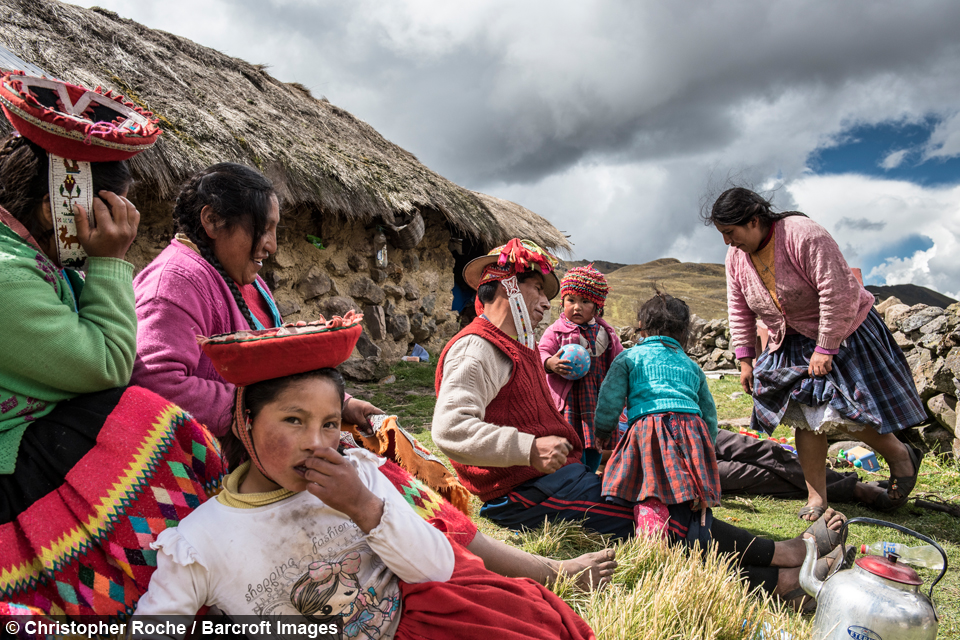Peruvian villagers sell vibrant handwoven clothing worldwide
By Hannah Stevens @Hannahshewans
Scroll down for the full story
The occupants of Lares Valley, in the eastern Urupampa mountain range, are world renowned for their vibrant textiles but live on an extremely limited diet because little vegetation grows at the high altitude.
Photographer Christopher Roche hiked to an altitude of 4200 metres to meet the isolated Quechua people.
He set off on his trip in partnership with Apus Travel, who support the communities of the valley through their Threads of Peru project, which sells handmade items from the region online.
Christopher said: “I try during each trip to contribute to a local charity with my work.
“The trek along Lares Valley was wonderful. We did not meet any other travellers, just the local communities - potato growers and hand weavers living in thatched cottages - and many, many llamas.
“The landscape was wild and just stunning.”
Christopher travelled deep into the valley to capture the mesmerising colours of the communities clothing, but the altitude proved to be a bit of a challenge.
He added: “We walked slowly to compensate for the altitude and had to spend a couple of nights in Cusco getting used to it beforehand.
“I didn’t sleep at all the first night due to the altitude and headaches, but this passed by the second day.”
Everyday life is harsh for the villagers of Lares Valley and the communities live on a limited diet of mostly potatoes as they are one of the few vegetables capable of growing in such harsh conditions.
But Threads of Peru hope to improve their quality of life by encouraging Quechua men and women to take pride in their cultural heritage and pass their traditions along for generations to come.
The project works with weavers, mostly women, who have little or no access to education and few economic opportunities close to home, to help them earn an income independently from their husbands.
According to Threads of Peru, international development studies have shown that when women receive their own income the health and well-being of their children improves at a faster rate than when men have complete control over the family’s money.
Increasing coverage of the Lares Valley has made it a popular alternative to the Inca Trek and the outside world is slowly creeping in.
Roads are being built to provide easier access to the area and villagers are enjoying waterproof replacements for their thatched roofs.
Christopher said: “I believe they probably have mixed feelings regarding a greater connection with the outside world. “The older villagers may want to protect their traditions but younger ones may be looking for potentially greater economic rewards and the comfortable living that the connection could make.”







